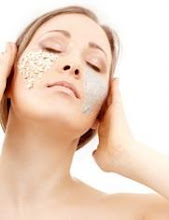High Gothic
c.1267 - Giotto di Bondone is born in Vespignano near Florence
1290 - works as assistant to painter Cimabue in Assisi.
1300 - paints frescoes for the Papal Palace
1302-1305 - paints the Scrovegni Chapel in Padua.
1309 - creates frescoes for the basilica in Assisi.
1310 - starts working in the old St. Peter's in Rome. 1325 - paints the Peruzzi Chapel in the church of Santa Croce in Florence.
1328 - is summoned to Naples by King Robert of Anjou.
1334 - becomes the cathedral architect of Florence.
1337 - Giotto di Bondone dies on January 8 in Florence.
Giotto was a master builder and a painter. He focused mostly on illustrating Bible stories and making his images as realistic as possible using strong, contrasting colors to achieve spatial depth in his frescoes. Unlike other Medieval artists who copied religious figures from books, Giotto used people to model for him (Madonna Ognisanti).
When creating a fresco, the paint is applied to damp plaster made of sand, lime, and marble dust. Giotto plastered as much as he could paint in a day, therefore his frescoes have survived in such great condition throughout the years. Soon Giotto's paintings became very well known in all of Florence and beyond that he needed assistans to meet the demand for his work. He was getting orders from merchants and bankers, but also the Pope and the King of Naples. Enrico Scrovegni called Giotto to Padua to paint his private chapel with forty frescoes that tell the stories of Jesus, Mary, and other Biblical figures.

Rising of Lazarus (1302-05)
fresco.
Arena Chapel, Padua.

The Scrovegni Chapel frescoes (1302-1305)
Padua.

Frescoes from the Chapel -
Expulsion of Joachim from the Temple

Joachim Retires to the Sheepfold

The Annunciation of Anna

The Sacrifice of Joachim

The Vision of Joachim

The Meeting at the Golden Gate

The Birth of the Virgin

The Presentation of the Virgin

The Presentation of the Rods

The Watching of the Rods

The Betrothal of the Virgin

The Virgin's Wedding Procession

God Dispatching Gabriel

The Annunciation

The Visitation



Thanks for sharing on Giotto di Bondone – Father of European Painting!
ReplyDelete